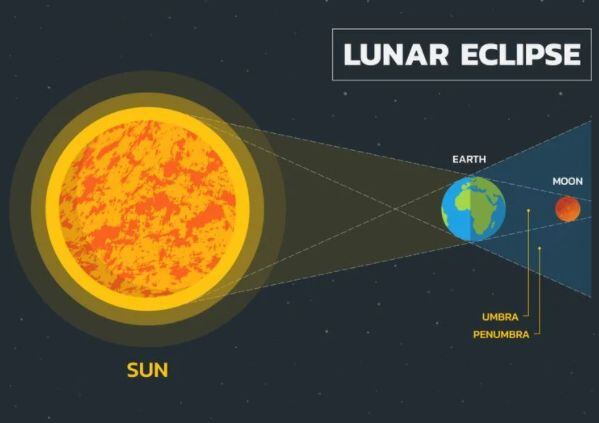This Friday our satellite will be so close to the Sun in the sky that it will pass through the southern part of the Earth’s shadow, which will generate an almost total lunar eclipse. This event also coincides with a full moon.
SIGHT: NASA confirms CO2 is trapped on the Moon, a resource for exploration
and it will be visible to observers in North America, Pacific Ocean countries, including Peru, and the eastern tip of Asia.
If the sky is clear in the aforementioned areas, the phenomenon will be observable with the naked eye. To see the lunar eclipse you do not need special equipment.
You can see the eclipse LIVE here:
The phenomenon will be the longest partial lunar eclipse in 580 years, with a duration of little, and its passage through the darkest part of the Earth’s shadow will last approximately 3 hours, 28 minutes and 23 seconds, reports the media specialized Space.
The partial shadow of the Earth will begin to fall on the upper left of the Moon at 06H02 UTC (01H02, in Peru), but the slight darkening of the Moon will not be noticed until the full shadow of the Earth begins to fall. at the top of the Moon at 7:18 UTC (5:18 in Peru).
until the peak of the eclipse at 9.02 UTC (7H02, in Peru) when more than 97% of the Moon will be in full shadow and only a small strip on the left side of the Moon will shine in the partial shadow of the Earth, reports the POT.

After the peak of the eclipse, the full shadow of the Earth will gradually move from the Moon to the lower right, emerging completely from the full shadow at 10:47 UTC (0547 in Peru). After this, the brightness of the Moon as it leaves the partial shadow of the Earth will be difficult to notice, especially since the morning twilight will begin at 10.54 UTC (05H54, in Peru). The Moon will emerge completely from the partial shadow of the Earth at 12H03 (07H03, in Peru).
With information from Europa Press
- They find a possible satellite galaxy of M33, the third largest of the local group
- Planet 9 | Astronomers identify possible evidence of its existence
- NASA confirms CO2 is trapped on the Moon, a resource for exploration
- US accuses Russia of putting Space Station at risk over missile tests
- The fastest spaceship in history will get as close to the Sun as possible
- A near-Earth asteroid could be a lost fragment of the Moon
- Why did NASA delay the return of humans to the Moon until after 2025?
- US manned mission to the Moon delayed to 2025 or later
- Chinese astronauts complete their first mission outside the space station
- NASA will crash a spacecraft into an asteroid to divert its trajectory
- NASA will conduct its first mining experiment on the Moon
- Astronomers detect signs of water in the largest galaxy in the remote universe
- The 64th anniversary of the first living being in space: Laika the dog
- A part of the Atacama desert has an extraterrestrial origin
- Astronomers discover that Mars could have an earthquake season
- The path NASA uses to identify life outside of Earth
Follow us on twitter:
!function(d,s,id){var js,fjs=d.getElementsByTagName(s)[0],p=/^http:/.test(d.location)?’http’:’https’;if(!d.getElementById(id)){js=d.createElement(s);js.id=id;js.src=p+’://platform.twitter.com/widgets.js’;fjs.parentNode.insertBefore(js,fjs);}}(document, ‘script’, ‘twitter-wjs’);
.

:quality(75)/cloudfront-us-east-1.images.arcpublishing.com/elcomercio/B5QYAKLXJVHWLPAXUQALGSJPBQ.jpg)

:quality(75)/cloudfront-us-east-1.images.arcpublishing.com/elcomercio/T2RE3UNPJBHJLK74I2SE4UZ34U.png)



